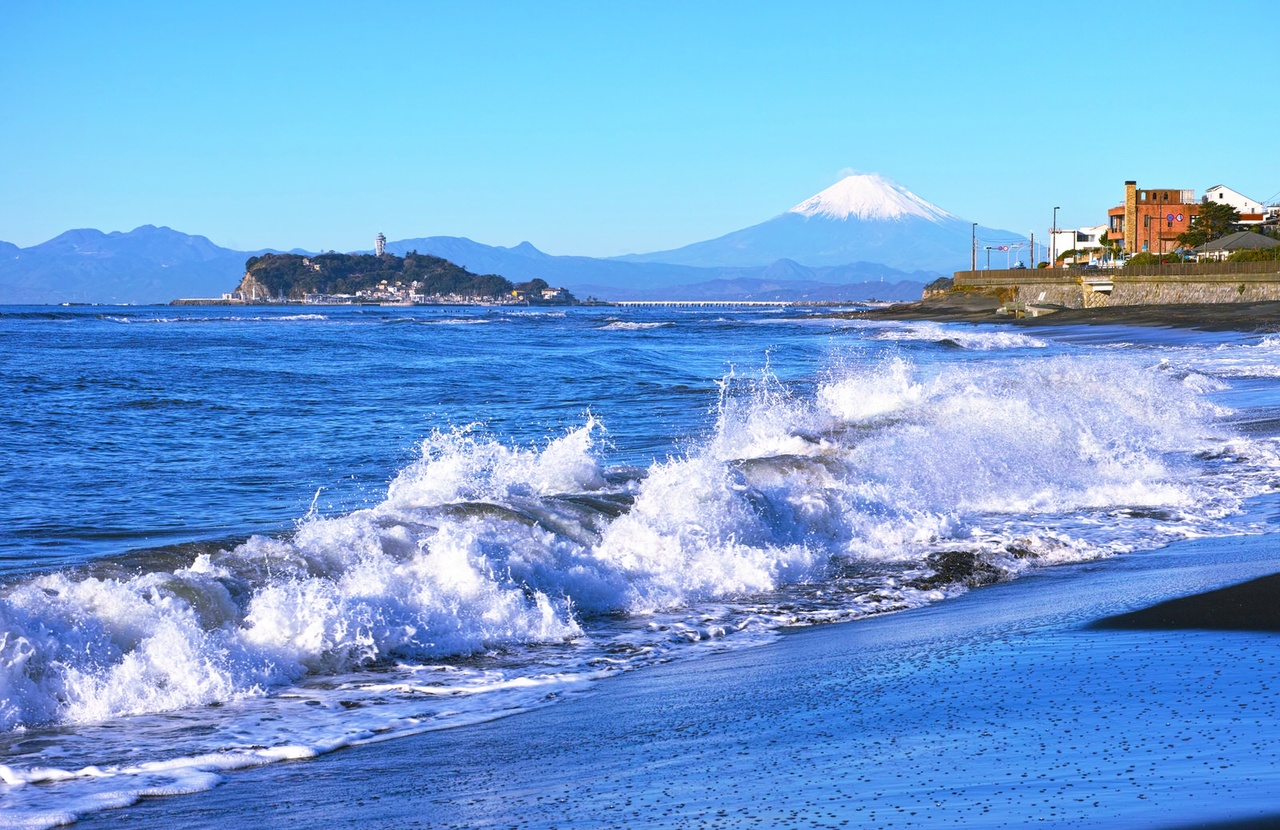Mount Fuji is a majestic and iconic symbol of Japan, known for its stunning natural beauty.
- “Picturesque” – Mount Fuji is often described as picturesque, with its perfectly symmetrical cone shape and snow-capped peak. It is a popular subject for photographers, artists, and tourists alike.
- “Breath-taking” – The sheer size and scale of Mount Fuji can be awe-inspiring, with its peak rising to over 12,000 feet above sea level. Its beauty is often described as breath-taking, leaving visitors speechless.
- “Serene” – Despite its grandeur, Mount Fuji has a certain serenity that is hard to ignore. The mountain is surrounded by peaceful lakes and forests, and the view from the top is said to be peaceful and calming.
- “Majestic” – Mount Fuji’s towering presence and stunning beauty make it a truly majestic sight to behold. It has a sense of grandeur and power that leaves a lasting impression on all who see it.
- “Iconic” – Mount Fuji is one of the most recognizable landmarks in Japan and is often used as a symbol of the country. Its beauty and cultural significance have made it an icon of Japan and a must-see destination for travelers from around the world.
In conclusion, Mount Fuji’s beauty is difficult to put into words, but it is truly a sight to behold. From its picturesque cone shape to its serene surroundings, the mountain’s majesty and iconic status make it a must-visit destination for anyone traveling to Japan.
Mount Fuji, also known as Fuji-san, is the highest mountain in Japan and an iconic symbol of the country. Located on Honshu Island, it is a popular destination for tourists from all over the world. Here is a travel guide to help you plan your trip to Mount Fuji.
When to visit:
The best time to visit Mount Fuji is during the summer months of July and August when the weather is warm and clear. During this time, the mountain is usually free of snow and the hiking trails are open. However, keep in mind that this is also the peak season and the mountain can be very crowded. If you prefer a quieter experience, consider visiting in the shoulder seasons of late spring or early autumn.
Getting there:
The closest major city to Mount Fuji is Tokyo, which is about 100 km away. From Tokyo, you can take a bus or train to one of the five Fuji Five Lakes (Kawaguchiko, Saiko, Yamanakako, Shojiko, and Motosuko) that are located around the base of the mountain. Each lake has its own charm and offers different views of Mount Fuji. You can also take a direct bus from Tokyo to the fifth station of Mount Fuji, which is the starting point for most hikers.
Hiking:
Hiking is the most popular activity at Mount Fuji. The most common trail is the Yoshida Trail, which starts at the fifth station and takes about 6-8 hours to reach the summit. Other trails include the Subashiri Trail, Gotemba Trail, and Fujinomiya Trail. Keep in mind that hiking can be strenuous and requires good physical condition. It is also important to check the weather forecast and trail conditions before starting your hike.
Other activities:
If hiking is not your thing, there are plenty of other activities to enjoy around Mount Fuji. You can take a cruise on one of the Fuji Five Lakes, visit the Fuji-Q Highland amusement park, or relax in one of the many hot springs in the area. There are also several museums and cultural sites that showcase the history and art of the region.
Accommodation:
There are many accommodation options around Mount Fuji, ranging from budget hostels to luxury resorts. Staying in one of the Fuji Five Lakes towns is a popular option, as they offer easy access to the mountain and other attractions. If you prefer a more traditional experience, consider staying in a ryokan, a Japanese-style inn that often includes meals and hot springs.
In conclusion, Mount Fuji is a must-see destination in Japan. Whether you want to hike to the summit or simply admire the views, there is something for everyone at this iconic mountain. Just remember to plan ahead, check the weather, and enjoy all that the area has to offer.



